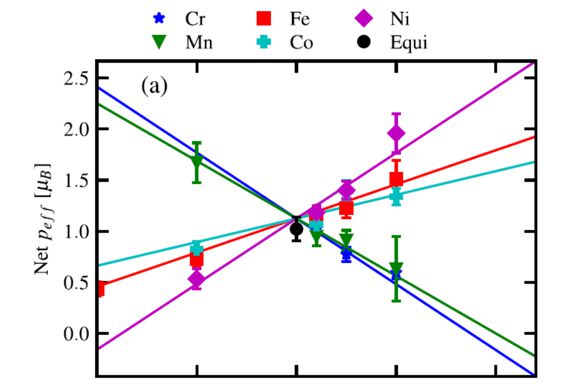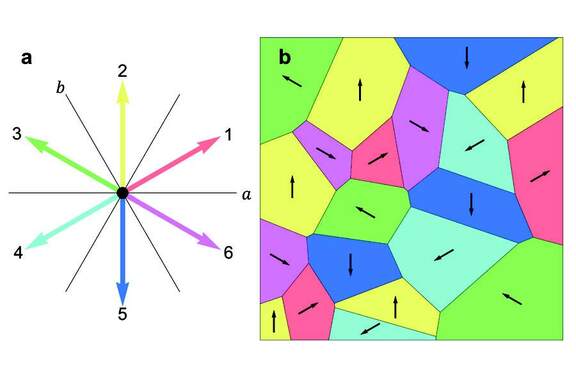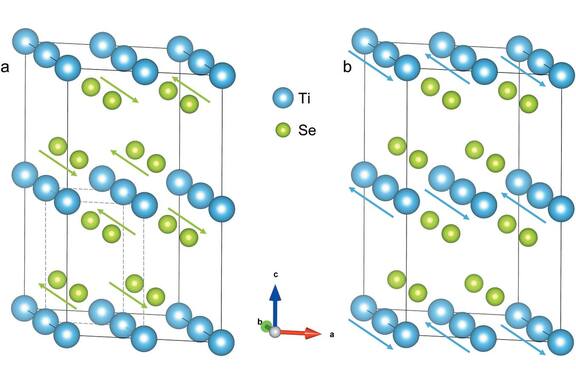 About the Group
About the Group
We are an experimental condensed matter physics group focused on investigating the structure and magnetism of fascinating--and often technologically promising--materials, such as superconductors, strongly correlated electron systems, multiferroics, magnetocalorics, molten salts for nuclear reactors, and more. We use beams of neutrons, x-rays, and muons produced at large-scale accelerator facilities to probe the atomic and magnetic correlations in these materials, together with advanced computational modeling to gain quantitative insight into the spatial arrangement of atoms and spins in a given material. Specific techniques include atomic and magnetic pair distribution function (PDF) analysis of neutron/x-ray total scattering data and muon spin relaxation/rotation (μSR). Interested and motivated undergraduate and prospective graduate students are encouraged to reach out to learn more about our research and find opportunities to participate.
Research Projects
Thermoelectrics, Magnetocalorics, and Multiferroics--Oh My!
This project focuses on the connection between the local atomic and magnetic structure and the energy-relevant properties of magnetocaloric, thermoelectric, and multiferroic materials. Magnetocaloric materials exhibit large temperature changes with the application and removal of a magnetic field, offering promising applications in solid-state refrigeration and waste heat harvesting. Thermoelectric materials experience an electrical voltage when subjected to a temperature gradient or vice versa, also providing novel routes for energy-efficient cooling and waste heat harvesting. Multiferroic materials show cross-order coupling between electric polarization and magnetic order, potentially enabling unique functionalities for energy transformation, information science, and signal processing. We are using combined atomic and magnetic pair distribution function analysis, together with muon spin spectroscopy, to establish the local atomic and magnetic structure of representative compounds for these material classes and better understand the origin of their outstanding properties. In the process, we are developing new experimental and computational methods for magnetic pair distribution function analysis, which will be widely applicable to many other materials, as well. Funding: US Department of Energy, Early Career program.
Promoting Many-Body Quantum Entanglement in Geometrically Frustrated Magnets with Disorder
Quantum information technologies rely on quantum entanglement, or the intrinsic linking of one quantum object to another. An important research objective is to gain a fundamental understanding of many-body quantum entanglement involving large numbers of quantum objects. Certain magnetic materials known as geometrically frustrated magnets provide a valuable platform for this topic of study because they may exhibit many-body-entanglement at low temperature. This project advances the search for promising quantum-entangled frustrated magnets through a systematic investigation of the role of atomic-scale disorder in promoting or hindering many-body entanglement. The results illuminate strategies for utilizing disorder to promote quantum-entangled ground states and contribute to a deeper understanding of many-body quantum entanglement in general. Funding: US National Science Foundation LEAPS Program.
Novel magnets, Magnetic Nanoparticles, Metal-Insulator Transitions, High-Entropy Materials, and More
We maintain broad interest and involvement in structural studies of numerous material systems where knowledge of the local atomic and magnetic structure can add value. We have ongoing projects on novel magnets such as altermagnets and low-dimensional magnets, magnetic nanoparticles, Mott insulator systems and materials with metal-insulator transitions, high-entropy alloys and oxides, and more. We are always open to collaborations on interesting material systems.
Selected Publications

Magnetic properties of more than 20 Cantor alloy samples of varying composition were investigated over a temperature range of 5 K to 300 K and in fields of up to 70 kOe using magnetometry and muon spin relaxation. Two transitions are identified: a spin-glass-like transition that appears between 55 K and 190 K, depending on composition, and a ferrimagnetic transition that occurs at approximately 43 K in multiple samples with widely varying compositions. The magnetic signatures at 43 K are remarkably insensitive to chemical composition. A modified Curie-Weiss model was used to fit the susceptibility data and to extract the net effective magnetic moment for each sample. The resulting values for the net effective moment were either diminished with increasing Cr or Mn concentrations or enhanced with decreasing Fe, Co, or Ni concentrations. Beyond a sufficiently large effective moment, the magnetic ground state transitions from ferrimagnetism to ferromagnetism. The effective magnetic moments, together with the corresponding compositions, are used in a global linear regression analysis to extract element-specific effective magnetic moments, which are compared to the values obtained by ab initio based density functional theory calculations. These moments provide the information necessary to controllably tune the magnetic properties of Cantor alloy variants.

A comprehensive x-ray scattering study of spontaneous magnetostriction in hexagonal MnTe, an antiferromagnetic semiconductor with a Néel temperature of TN = 307 K, is presented. The largest spontaneous magnetovolume effect known for an antiferromagnet is observed, reaching a volume contraction of |ΔV/V| > 7 × 10−3. This can be justified semiquantitatively by considering bulk material properties, the spatial dependence of the superexchange interaction, and the geometrical arrangement of magnetic moments in MnTe. The highly unusual linear scaling of the magnetovolume effect with the short-range magnetic correlations, beginning in the paramagnetic state well above TN, points to a novel physical mechanism, which is explained in terms of a trilinear coupling of the elastic strain with superposed distinct domains of the antiferromagnetic order parameter. This novel mechanism for coupling lattice strain to robust short-range magnetic order casts new light on magnetostrictive phenomena and also provides a template by which the exceptional magnetostrictive properties of MnTe might be realized in a wide range of other functional materials.

NiPSe3 is regarded as a bandwidth-controlled Mott insulator, distinct from the widely studied Mott insulating magnetic graphene MPSe3 (M = Mn and Fe) family. By employing high-pressure synchrotron X-ray diffraction, we observe two structural transitions as a function of pressure. With the help of first-principles calculations, we discover the antiferromagnetic (AFM) moment directions of NiPSe3 switch from out-of-plane to in-plane and the honeycomb layers slide relative to each other at the first structural transition. The in-plane AFM order persists until the second structural transition, whereupon the two-dimensional (2D) structure assumes a more three-dimensional (3D) character. A bandwidth-controlled Mott insulator-metal transition (IMT) occurs between the two structural transitions at Pc ~ 8.0 GPa, concomitant with the emergence of superconductivity with Tc ~ 4.8 K. The superconductivity in NiPSe3 emerging in the 2D monoclinic phase coexists with the in-plane AFM order and continues into the 3D trigonal phase. Our electronic structure calculations reveal that the IMT and superconductivity in NiPSe3 are both related to the enhanced Se2− 4p and Ni2+ 3d electronic hybridizations under pressure. From these results, we construct a temperature-pressure electronic phase diagram of NiPSe3, revealing interesting relationships between magnetism and superconductivity.

Symmetry-adapted distortion modes provide a natural way of describing distorted structures derived from higher-symmetry parent phases. Structural refinements using symmetry-mode amplitudes as fit variables have been used for at least ten years in Rietveld refinements of the average crystal structure from diffraction data; more recently, this approach has also been used for investigations of the local structure using real-space pair distribution function (PDF) data. Here, the value of performing symmetry-mode fits to PDF data is further demonstrated through the successful application of this method to two topical materials: TiSe2, where a subtle but long-range structural distortion driven by the formation of a charge-density wave is detected, and MnTe, where a large but highly localized structural distortion is characterized in terms of symmetry-lowering displacements of the Te atoms. The analysis is performed using fully open-source code within the DiffPy framework via two packages developed for this work: isopydistort, which provides a scriptable interface to the ISODISTORT web application for group theoretical calculations, and isopytools, which converts the ISODISTORT output into a DiffPy-compatible format for subsequent fitting and analysis. These developments expand the potential impact of symmetry-adapted PDF analysis by enabling high-throughput analysis and removing the need for any commercial software.

We report the first example of magnetic pair distribution function (mPDF) data obtained through the use of neutron polarization analysis. Using the antiferromagnetic semiconductor MnTe as a test case, we present high-quality mPDF data collected on the HYSPEC instrument at the Spallation Neutron Source using longitudinal polarization analysis to isolate the magnetic scattering cross section. Clean mPDF patterns are obtained for MnTe in both the magnetically ordered state and the correlated paramagnet state, where only short-range magnetic order is present. We also demonstrate significant improvement in the quality of high-resolution mPDF data through the application of ad hoc corrections that require only minimal human input, minimizing potential sources of error in the data processing procedure. We briefly discuss the current limitations and future outlook of mPDF analysis using polarized neutrons. Overall, this work provides a useful benchmark for mPDF analysis using polarized neutrons and provides an encouraging picture of the potential for routine collection of high-quality mPDF data.

The open-source Python package diffpy.mpdf, part of the DiffPy suite for diffraction and pair distribution function analysis, provides a user-friendly approach for performing magnetic pair distribution function (mPDF) analysis. The package builds on existing libraries in the DiffPy suite to allow users to create models of magnetic structures and calculate corresponding one- and three-dimensional mPDF patterns. diffpy.mpdf can be used to perform fits to mPDF data either in isolation or in combination with atomic pair distribution function data for joint refinement of the atomic and magnetic structure. Examples are given using MnO and MnTe as representative antiferromagnetic compounds and MnSb as a representative ferromagnet.